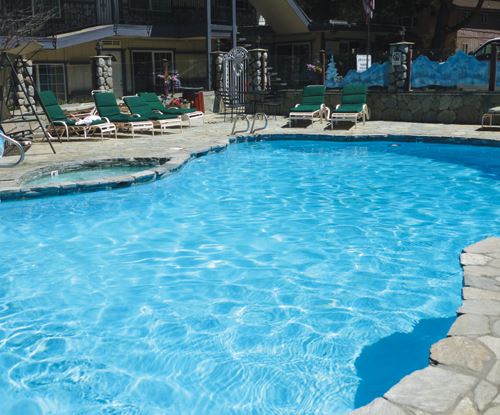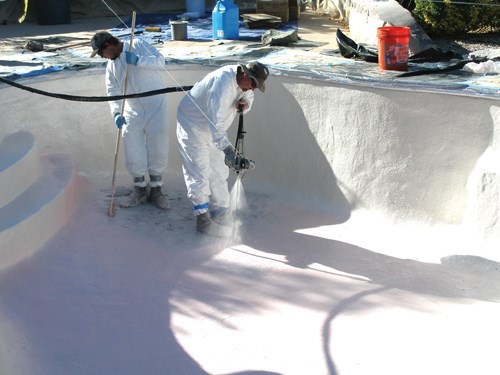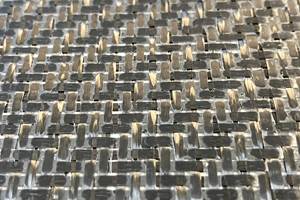Swimming pools: Fiberglass resurfacing option extends useful life
GRC Fiberglass Coatings (Santa Rosa, Calif.) rehabilitates aging swimming pools in the U.S. and Canada using a fiber-reinforced polymer (FRP) approach first developed for steel and concrete corrosion protection in African gold refineries.
Founded more than 30 years ago in South Africa and now headquartered in Santa Rosa, Calif., GRC Fiberglass Coatings rehabilitates aging residential and commercial swimming pools in the U.S. and Canada using a fiber-reinforced polymer (FRP) approach first developed for steel and concrete corrosion protection in African gold refineries. GRC’s owner, Peter Gibson, a consultant to the pool industry since 1990, stresses that his product is not a replacement pool structure but instead a much less costly FRP coating, or lining, designed for onsite application to degraded pool surfaces.
To meet the requirements of the application, a high-crosslinking, corrosion-resistant isophthalic resin from Interplastic Corp. (St. Paul, Minn.) is modified with shrink-resistant additives to promote bonding and is combined with chopped glass fiber — 4800 TEX EC-R OptiSpray Roving from Owens Corning Composite Solutions Business (Toledo, Ohio). Tailored for sprayup application, the material forms a pool lining with a 70:30 resin/glass ratio.
GRC provides these materials to selected pool care firms, under the brand name Sprayvex. The Sprayvex system is 10 to 20 percent more costly than plaster or cement-based repairs, Gibson acknowledges, but he estimates that time and cost savings in preparation, processing, pool startup and postapplication maintenance actually gives FRP a cost advantage over the long run.
A key savings point is the preparation of a pool’s damaged plaster finish, Gibson says. Instead of chipping away the damaged plaster , a time-consuming step that must precede cementitious repair, preparation for FRP sprayup consists only of scarification of the concrete substrate to a ±2 mm/0.079 inch anchor (jagged) profile, which helps the resin grip and bond to the substrate.
Where there are structural cracks in the concrete substrate, a 13-oz/0.37-kg woven roving mat is layed up over the damaged area before FRP spray up begins. A layer of resin (without fiberglass) is applied as a sealer/primer coat, followed by sprayup and rollout of the glass/resin lining to a thickness of 4 to 5 mm (0.16 to 0.2 inch).
The Sprayvex system includes a proprietary finish layer: a 40-mil (0.04-inch) topcoat specially formulated to perform in pool water with a pH between 7.2 and 7.8 and a chlorine concentration up to 3 ppm at a water temperature of 80°F/27°C. This sprayed-up, resin-only topcoat is a high-viscosity (5,000 cps) isophthalic/neopentyl glycol (ISO/NPG) polymer that reportedly offers osmosis, or hydrolytic, stability; blister and UV resistance; and protection against fiber bloom. It contains a wax surfacing agent to help prevent air from inhibiting cure and also incorporates custom color pigments.
Gibson estimates that GRC’s sprayup application is 25 to 30 percent faster than applying cement-based products. After a two-day ambient cure, the pool is ready for water start up and balancing of pool chemicals. Unlike with cementitious finishes, the Spravex coating system is inert, says Gibson, and that means “there is no two-way interaction between the pool water and the surface, so pool chemicals are more efficient and fewer are needed, saving large commercial pools thousands of dollars per year.” GRC, in fact, offers a written 15-year material performance warranty that, Gibson says, “addresses the performance issues of the surface in a swimming pool.”
Sprayup equipment from GS Manufacturing (Costa Mesa, Calif.) is used exclusively. “GS provides robust equipment with the ability to run hoses 250 to 300 ft [76.2m to 91.4m] long for onsite field work,” Gibson says. “Other companies do not go beyond 150 ft [45.7m].”
To date, the Sprayvex system has been used to rehabilitate about 1 million ft2 (92,903m2) of swimming pool surfaces. In one challenging example, the Sprayvex system was used to resurface three pools (totaling about 5,500 ft2/511m2) in Desert Hot Springs, Calif. — in August, in 110°F/43°C temperatures. “To accomplish the resurfacing in this heat, we extended the gel time of the resin and specially adapted the catalyst to slow the reaction time,” Gibson explains.
GRC also offers topcoats to refinish prefabricated pools and FRP slides in water parks, and the Sprayvex system has been used to refinish tanks for chrome-plating processes. Additionally, the company has joined forces with Spider Tie (Providence, Utah), the developer of a self-named concrete wall-forming system, to provide a finish for poured-in-place concrete (PIPC) pools.
In 2011, market research firm P.K. Data (Atlanta, Ga.) reported that there are as many as 5,371,000 in-ground residential pools and 309,000 commercial pools in the U.S. alone. Gibson estimates that 10 percent of these, annually, are scheduled for refurbishment — a growth market in the making for composite materials.
Related Content
Pontacol thermoplastic adhesive films are well-suited for composite preforms
Copolyester- and copolyamide-based adhesive films eliminate the need for sewing threads or binders when stacking laminates while improving the final part’s mechanical properties.
Read MoreScott Bader, Oxeco partner for high-performance bonding solution
Joint technology breaks barriers to bonding lightweight flexible solar panels to roofing structures made from aluminum, coated steel and composites.
Read MoreIPSA acquires bonding adhesives based on MMA technology
IPS Adhesives (IPSA) introduces a line of adhesives using acrylate and MMA technology from L&L Products for the bonding of dissimilar materials such as metals and composites.
Read MoreComposite resins price change report
CW’s running summary of resin price change announcements from major material suppliers that serve the composites manufacturing industry.
Read MoreRead Next
“Structured air” TPS safeguards composite structures
Powered by an 85% air/15% pure polyimide aerogel, Blueshift’s novel material system protects structures during transient thermal events from -200°C to beyond 2400°C for rockets, battery boxes and more.
Read MoreAll-recycled, needle-punched nonwoven CFRP slashes carbon footprint of Formula 2 seat
Dallara and Tenowo collaborate to produce a race-ready Formula 2 seat using recycled carbon fiber, reducing CO2 emissions by 97.5% compared to virgin materials.
Read MoreVIDEO: High-volume processing for fiberglass components
Cannon Ergos, a company specializing in high-ton presses and equipment for composites fabrication and plastics processing, displayed automotive and industrial components at CAMX 2024.
Read More










.jpg;maxWidth=300;quality=90)











